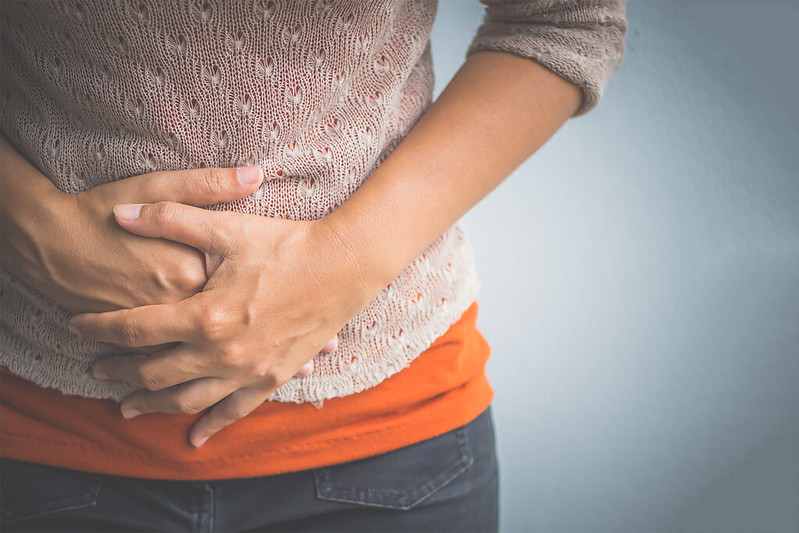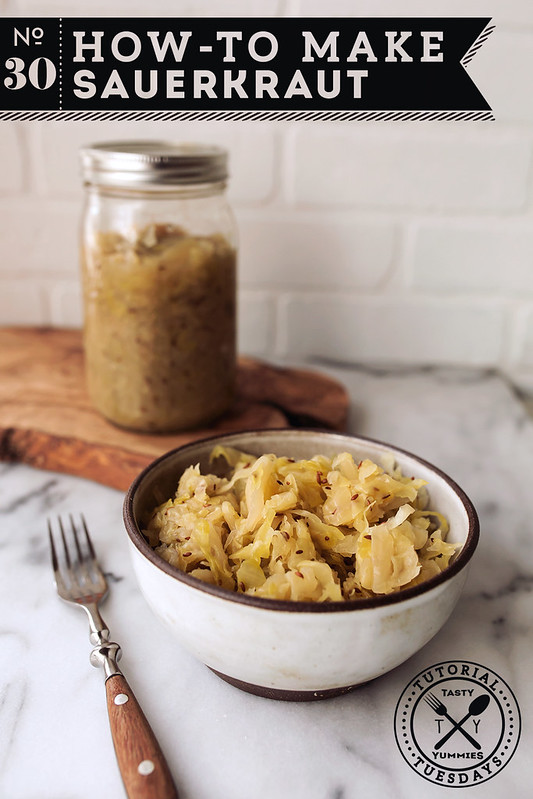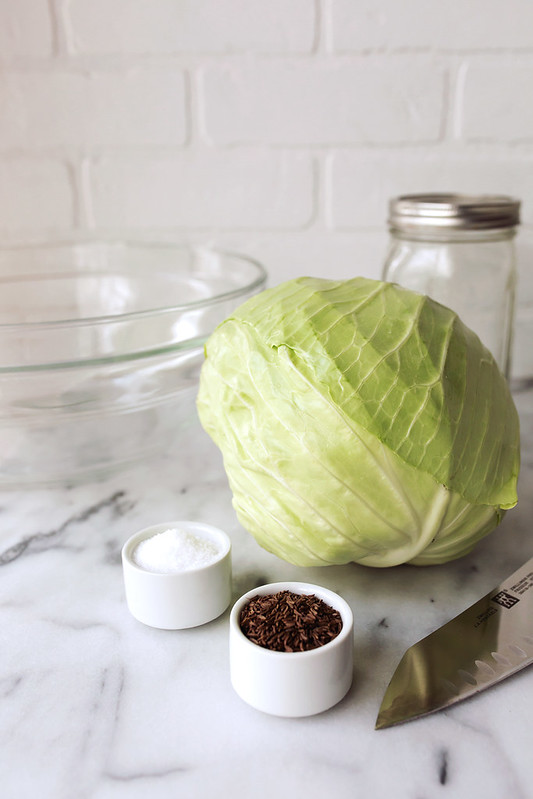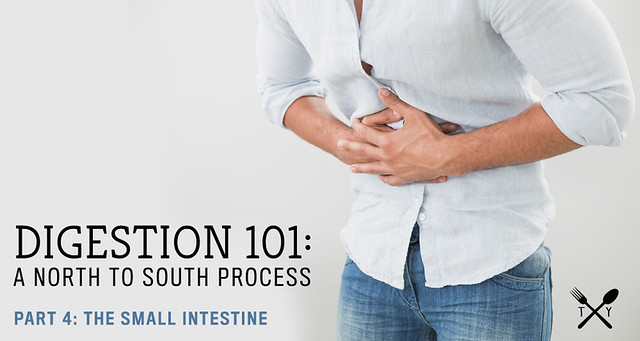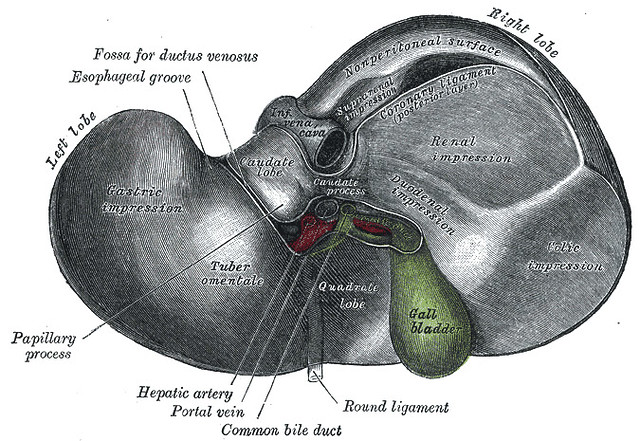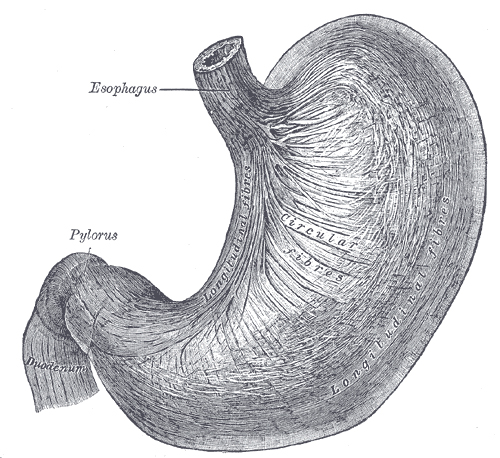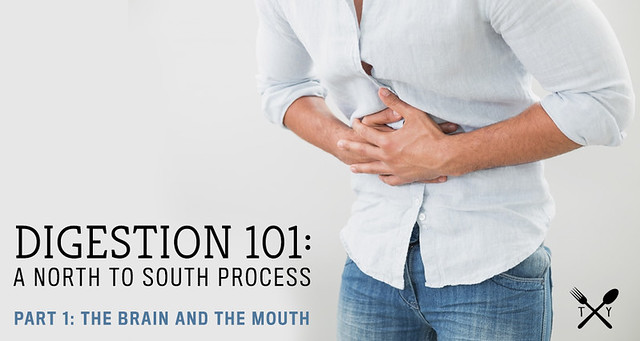-
How I Treat a Gut Flare Up / My Gut Healing Go-tos
A few weeks back I was in the thick of a pretty annoying gut flare up. Bloating, gas and excruciating stomach aches with nearly every meal, the whole nine! For those of you that follow me there, I shared a bit on Instagram about what I was dealing with and also used this as an opportunity to remind you that even us “experts”, the nutritionists, health coaches and others working to help people in their health journeys – we aren’t immune to these kinds of set backs.
With the amount of questions and interest those posts created, I pulled together an email and sent it out to the Tasty Yummies list, sharing my personal gut healing approaches when I deal with an acute gut flare up. Because it was so well received and many of you mentioned how helpful this information was for you, I wanted to compile it into a permanent post here on the website, that would be much easier for you to reference, whenever you need it.
Healing Isn’t Linear and It’s Often Not Pretty.
Before we get into my personal gut-healing tips, I want to remind you that that your health and your wellness is not a linear journey, it’s not black and white and often it’s not too pretty, either. Healthy isn’t a destination! It isn’t a level you achieve, a peak you reach, that you only ever move forward and onward from. Things happen and this journey is ever-evolving. But, something tells me, many of you already know that.
Unfortunately, the set backs and the flare-ups happen, this is all part of the journey and for many of us, especially those of us who struggle with autoimmune issues, oftentimes it feels somewhat inevitable. But, I also try to stop in these moments and remind myself this is why I have worked so, so hard to prioritize my health, to listen to my body and to continuously educate myself – because as these setbacks emerge, I am now armed with an arsenal of tools to go into battle with and I find I bounce back far quicker than I ever have before.
In the event that you missed the conversation in my Instagram stories that week (you can catch a pulled together replay version of it here) – in a nutshell I was speaking about exactly all of this, so I won’t repeat myself too much. The feedback from you all was beyond amazing, though and hearing your own personal stories and struggles, it truly touched me! So thank you – for showing up, for sharing and being vulnerable in return.
As you may have seen in those stories, I mentioned that at the time, I was personally in the middle of a gut flare up, nothing crazy major, not a full on autoimmune crisis – but my gut was pretty dang angry. Could have been related to the episode where I got “food poisoning” in Mexico back in April or it could be a response to new supplements I had introduced or a reaction to a new food. Not too sure the cause or origin of the flare up, but, what I do know is that I have the knowledge and I am empowered to take control and implement the various gut soothing and healing approaches, to calm these flare ups as they happen.
And as a reminder to all of you, even those of us that are “wellness experts”, nutritionists, health coaches, etc, it can happen for us, too. We aren’t immune nor are we perfect – we don’t have it all 100% fully figured out, either.
Customized Wellness. Personalized Nutrition.
You’ll notice, I am not selling or sharing any of this as a protocol, a diet or a reset. Some of this looks like the autoimmune protocol, other parts look like a low-FODMAP or the SCD approach, some reminiscent of GAPS. This is because with WELL over 13 years of gut-healing under my belt, with experimenting, experiencing, trial and error – I now have a bit of a personalized gut healing tool kit that is customized just for me. This is why I am SO BIG on this idea of honoring your individuality, because there is NO ONE catch-all remedy for everyone and anyone that tries to tell you or sell you otherwise – is lying to you. Especially when it comes to the gut, my gosh there are a slew of factors to consider when it comes to gut health.
That said, below is some of what works for me, for gut healing and soothing. I share not because I believe if you are struggling that you should do exactly this and you will find relief, but more I want to inspire you to feel in control, in charge and to feel open to experimenting with your own approaches, so you too can create your own tool belt that you can use whenever necessary.
-
Digestion 101: A North to South Process // Part 5: The Large Intestine
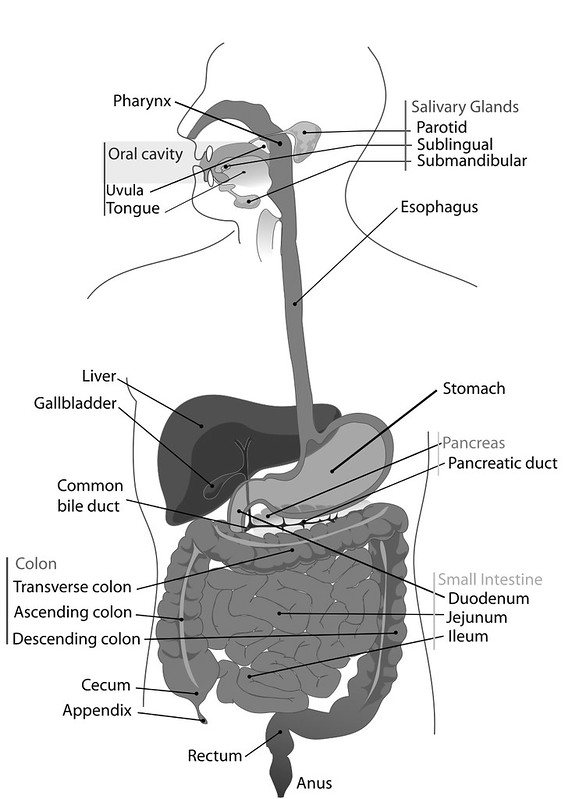
Digestion 101: A North to South Process
Here we are, at the end of the road. The large intestine is the final step in the process of digestion. By this point you probably more than understand the concept of digestion being a north to south process. We have talked about it at length starting first the brain and the mouth, and the importance of being in a parasympathetic state and properly chewing your foods, then of course the stomach and the dire need for proper hydrochloric acid production, how the accessory organs, the pancreas, liver and gallbladder continue the process of digestion, releasing bile, enzymes, various hormones and allowing the small intestines to finish digestion but more importantly do it’s very important job of assimilating nutrients and finally last but not least, the large intestine.
See Part One: The Brain and The Mouth
See Part Three: The Accessory Organs: Pancreas, Gallbladder and Liver
See Part Four: The Small Intestine
How it Should Work
The large intestine, or the bowel, is compromised of 3 sections, the cecum, colon and the rectum. The leftover chyme from the small intestines, passes through the illeocecal valve and first into the ascending colon. At this point in a healthy digestive system, what is left as chyme (the digested food) after the small intestines, is indigestible fibers, lots of water, sloughed off cells and bile. The large intestine is all about absorption and recycling.
As in the esophagus and the small intestine, the contents of the large intestine are pushed forward by a sequence of muscular contractions called peristalsis (a type of motility or muscular movement). After passing through the illececal valve the remains travels from the ascending colon, across the transverse colon where waste forms, into the descending colon, to the sigmoid colon and then the stool moves out of the body.
-
Digestion 101: A North to South Process // Part 4: The Small Intestine

Digestion 101: A North to South Process
As we continue more south in digestion, after first the brain and the mouth, then the stomach we move from the first part of the small intestines, the duodenum and it’s interaction with the accessory organs, the pancreas, liver and gallbladder and into the function of the small intestine.
After we leave the duodenum, the small intestine is less about the actual process of digestion, from a sense of breaking down the food we eat and it is more about the assimilation and absorption of nutrients.
The first part of the small intestines, the duodenum, acts more as a part of the stomach than the small intestine and the jejunum, ileum and villi are responsible for assimilation.
See Part One: The Brain and The Mouth
See Part Three: The Accessory Organs: Pancreas, Gallbladder and Liver

How it Should WorkThe small intestines have a dual role as an organ and a gland.
As we talked about in the previous post, The Accessory Organs – The Pancreas, Gallbladder and Liver, the small intestine releases mucous to keep things moving and it also releases two hormones: secretin and cholecystokinin.
Secretin stimulates the pancreas to release bicarbonate to lower the pH of the chyme and pancreatic juice. The CCK stimulates the gallbladder to release bile (to read more about these processes please see post #3).
By the time that the chyme has left the duodenum, thanks to the processes of the accessory organs, the chyme should be almost entirely digested.
- The carbohydrates have been broken down into glucose molecules
- Proteins are broken down into amino acids and polypeptides
- Fats are broke down into fatty acids and glycerol molecules
Peristalsis, a series of wave-like muscle contractions moves these absorbable molecules into the jejunum and the ileum, the middle and end parts of the intestine.
Within the small intestines, we have millions of villi, tiny finger-like projections that protrude from the epithelial lining of the small intestines. These villi and their microvilli absorb the nutrient molecules directly into the bloodstream, where they are carried throughout the entire body.
-
Digestion 101: A North to South Process // Part 3: The Accessory Organs – Pancreas, Gallbladder and Liver
Digestion 101: A North to South Process
As we continue more south in digestion, after first the brain and the mouth and then the stomach we move onto the accessory organs, the pancreas, liver and gallbladder
As we move further south from the stomach, while the small intestines are next in line for the food, but we first take a small pause/detour to discuss “the accessory organs of digestion”. The pancreas, liver and gallbladder, each play a very important role in the digestive process and each can be affected with their own dysfunction as well.
The stomach, small intestines and large intestines are all part of the system of digestion we call “the alimentary canal”, “the gut tube” or “digestive tube”. Between each of these organs we have valves or sphincters that keep the food where it is supposed to be and move it along when the time and the environment is right. These accessory organs are not a part of this tube or system but they play a major role in the process.

There is a synergistic and symbiotic relationship with the small intestines and these accessory organs, so we will discuss first how these play a role before we move into the function of the rest of the GI tract.
The duodenum is the start of the small intestine, but it almost acts more as part of the stomach, in it’s roles of breaking things down further playing a larger part in the process of digestion, vs the rest of the small intestine being less of a digestive organ and more about absorption or assimilation.
See Part One: The Brain and The Mouth
THE PANCREAS, GALLBLADDER AND LIVER:
How It’s Supposed to Work
When the pH of the chyme (the digested food moving from the stomach into the small intestines) is in it’s normal range, 1.5 – 3.0 , which we talked about in the stomach post. This is very acidic and necessary to the stomach performing it’s duties. As it hits the pyloric valve and into the duodenum with it’s proper pH, this is where the roles of the accessory organs come into play. This highly acidic chyme is what triggers these functions.
The duodenum no longer wants this highly acidic chyme and in order for the enzymes to work correctly it has to take that chyme to a neutral pH of 7.0. This happens by way of sodium bicarbonate, which is released by the pancreas to alkalinize the chyme. This release of sodium bicarbonate is signaled by secretin, a hormone released by the small intestines, which as you might have already guessed, is triggered by the (proper) acidic level of the chyme, that pH of 1.3 – 5. (Ahem, here is that reminder to look north, if the stomach isn’t producing proper HCl, then none of this will function properly, either!!)
-
Digestion 101: A North to South Process // Part 2: The Stomach
Digestion 101: A North to South Process
As we continue more south in digestion, after the brain and the mouth, next up we have the stomach. Before we get started, I wanted to remind you that you will constantly hear me reiterate as we go through this step-by-step process to “always look north” and I want you to truly understand what this means, exactly. I am referring to the fact that often times dysfunction that presents itself from further down the line, is actually due to a malfunction more north. For example, as you will read about in this second post and as we talked about briefly in the first, (the brain and the mouth), if you are eating in a stressful state and your body doesn’t make the necessary switch to that parasympathetic mode (rest and digest), then before your stomach ever had a chance to function properly, the brain basically threw it under the bus. So, while the symptoms may present themselves in the stomach (or even further south) it may not make sense to supplement, treat or approach the symptoms specifically until we instead move more north to investigate if these malfunctions are treatable with just some simple lifestyle and mindset shifts.

This is not at all to say that all digestive dysfunction starts in the brain, that would make my job and my own healthy journey so much simpler. In fact, there are many reasons why dysfunction can exist, as you will see, but beginning the investigative process at the start, way up north, allows us to rule out the possible, more simple resolutions before we move deeper and into more challenging treatments.
See Part One: The Brain and The Mouth
THE STOMACH:
How it’s Supposed to Work
After we chew our food, it turns into what we call a “bolus”. The bolus passes through the esophagus and the cardiac valve (the lower esophageal sphincter) and the bolus then enters our stomach, At this stage gastric juices are released. I like to think of the stomach as a blender. Mucous, pepsin and hydrochloric acid are all released for the “churning and burning” stage of digestion. Both mechanical and chemical breakdown happens at this stage.
The hydrochloric acid (HCl) being the most important of these gastric juices as it creates an acidic environment that disenfects the food and aids in the breakdown. Despite popular belief the stomach is absolutely meant to be acidic. In a healthy individual the pH of the stomach during digestion should drop to 1.5 to 3. We have a thick mucosal layer in our stomach, that acts as a barrier that protects the cells from the acid.
-
Digestion 101: A North to South Process // Part 1: The Brain and the Mouth
As many of you know, my digestion has been the source of much on and off distress over many years of my life. While I found the greatest relief by going 100% gluten-free after discovering an intolerance over 11 years ago, my digestion in the time since, has still not been without challenge and discomfort and at times, straight pain. As I began the journey to heal my body of my newly discovered autoimmune condition last year, we first needed to address my still, not-so-great digestion. This foundational approach to the healing of consequences, such as autoimmune conditions, by first treating digestive dysfunction – is a common approach, especially for functional and naturopathic doctors and nutritionists, who know that without properly functioning digestion, we cannot expect to ever find health and vitality. Without proper digestion we can be sure that we aren’t going to adequately assimilate the necessary nutrients through the food we are eating, no matter how healthy we eat and no matter what supplements or medications that we take. In working with a naturopathic doctor, we discovered early last year that I was struggling with leaky gut, and even found at the start of this year, after a year of dealing with the leaky gut, yet still not feeling 100%, that I had an unwelcome parasite and an excess of pathogenic bacteria (both likely the results of having a leaky gut, for who knows how long). It’s been a long year, to say the least.
Through the process of my own personal journey, I have and I continue to learn so much about digestion. This personal, ongoing path towards healing and all of the knowledge and know-how I have collected along the way, is what ultimately prompted me to go back to school to become a certified nutritional therapist. I wanted to truly learn and understand all of this in much deeper and fuller way, to allow me to not only continue to help and heal myself and my loved ones, but to also share this knowledge with others and hopefully help them help themselves, in the process.
So much of what we have been learning in school, about nutrition and more specifically, digestion, has really struck home for me. Much of what we cover are very simple concepts that I truly believe most people need to understand, and support – all of this ultimately has inspired me to share with you guys more about the process of digestion! I know so very many of you, too, are plagued by these varying epidemic levels of dysfunction and I want to empower you with the knowledge to overcome them.
In this series of posts I am going to break down the north to south process of digestion, covering how proper function should occur and also discussing the typical dysfunctions that can derail this process along the pathway. I am also going to offer advice, tips, foods, supplements and other remedies, both traditional and not, to hopefully bring you healing.
Digestion 101: A North to South Process
Digestion is a north to south process, it begins in the brain and ends in elimination. More often than not, while we feel the signs and symptoms of poor digestion further down the line, in the stomach or the upper or the lower GI, simply treating those symptoms with band-aid-like approaches, natural or not, likely won’t get to the root of the problem. To properly address any digestive dysfucntion and truthfully many other nutritional deficiencies, dysfunctions, illness, allergies, etc – we must first start up north, acknowledging possible dysfunction and continue moving south until we address all possible culprits.
Just as proper digestion is a north to south process, so is dysfunction. So, to properly understand and diagnose digestive dysfunction, we have to start all the way at the top, up north in the brain. Yes, the brain is one of THE most crucial elements of digestion. One of the most important take-aways, I hope this first post gives you, is an understanding that remedying digestive malfunction and dysfunction doesn’t always rely on supplements and major dietary changes, oftentimes if can be simple lifestyle changes that can make all the difference in the world. All of the tips I offer in this first post, won’t cost you a dollar, you don’t need to track down supplements or special foods and in fact, you can start today. So, let’s peel back the layers of digestion, before we supplement our way out and instead, let’s support the process as it’s supposed to happen.
As a side-note, these northern-most points in the digestive process are probably my most favorite to cover, they are the starting points of the entire process, but they also require so little, in terms of support.
